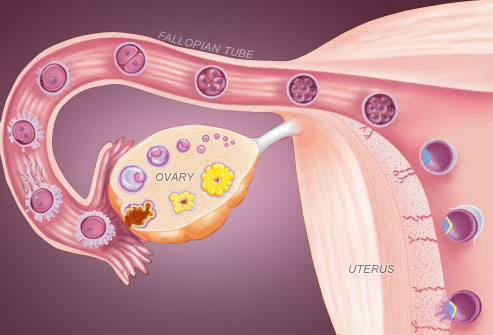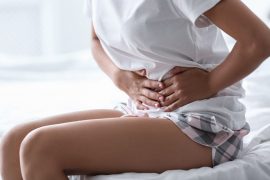By: Dr. Abayomi Ajayi
A woman has a so called fertile window or period when she is only able to naturally conceive in her month long menstrual cycle. This is how it works in humans.
Every month a woman’s menstrual cycle begins with bleeding which is generally referred to as menses. It is the shedding of the thickened lining of the womb. This thickening had occurred in the previous menstrual cycle under the influence of hormones or chemical substances from the brain and ovaries to prepare to receive a pregnancy. In fact, some refer to menses as the tears of a disappointed womb. Despite this disappointment, the womb picks itself up again and starts to prepare in the hope that this time a pregnancy will occur.
This preparation commences with the bleeding and another rise in production of these chemical substances (hormones) from the brain and ovaries. At the same time, the womb is preparing, the same chemicals also act on the ovaries to make them begin to mobilize eggs. The ovaries are the factories that produce eggs in women. The ovaries are equipped with all the eggs a woman will need in her life time from birth. At birth a girl child has about 2 million eggs and by the time she attains menarche (starts her menstruation) she has about 400,000 eggs because the eggs continue to diminish as she ages unlike in the men where the counterparts of the ovaries called testes (the factories for sperms) keep on producing new sperms on demand. This is why it is said that a woman has a biological or physiological clock which continues to tick and why she needs to make hay while the sun shines as her egg quality and number diminishes over time and hence her fertility depreciates with age. A woman needs only about 400 eggs in her reproductive life time. A woman’s fertility begins to diminish significantly after the age of 35.
The ovaries mobilize a certain number of eggs every month (say 20 but under the influence of the hormones mentioned above only one mature egg (or occasionally two) makes the journey and is released from the ovary during a process called ovulation. The egg is picked up by the fallopian tube and if intercourse is had at around this time of ovulation (fertile period) there is a good chance that a sperm will meet with the released egg in the fallopian tube and fertilization (which is the union of sperm and egg) will occur. This is necessary for pregnancy to occur. It is important to note that this fertile window may vary from one woman to another.
Day 1 of a woman’s cycle is the day she starts her menses (bleeding) and the last day of her cycle is the day before the next bleeding or menses starts. Not all women have the standard 28 day cycle. 21-35 day cycles are also normal. Ovulation generally occurs about 2 weeks before the next period so around day 14 for a woman who has a 28 day cycle, day 7 for a woman with a 21 day cycle and day 21 for one with a 35 day cycle.
The fertile window is generally believed to be 5 days to the day of ovulation and also including the day of ovulation (about 6 days). The best of these days is the 3 days leading up to and including the day of ovulation, so for a woman with a 28 day cycle, days 12, 13 and 14 are the most fertile while for a woman with a 21 day cycle day 5, 6 and 7 are the best days.
Sperms can survive in the female genital tract for up to 5 days but eggs survive only 12-24 hours. In fact, eggs are best fertilizable within 12 hours of release (ovulation).
How can a woman know her fertile period or when she is ovulating and therefore maximize her chances of conceiving?
There are a few ways:
- Using the Basal Body Temperature (BBT): There is usually a slight 0.5⁰ C rise in the woman’s temperature just after she ovulates (releases the egg). So if you can check your temperature consistently and correctly with a special BBT thermometer (for accuracy) before you get out of bed every morning then you just might be able to know when you ovulate.
- Assessing the cervical mucous: There is usually a change in the cervical mucous around the time of ovulation. This is a normal discharge that comes through the vagina. If you are observant enough you may notice that it becomes clear, slick and slippery and of the consistency of egg white. It is believed to indicate that ovulation is taking place and is considered as one of the best signs of ovulation. It calls for intercourse with your partner at this time if you are trying to get pregnant.
- Using the ovulation predictor kits: There are kits which employ special strips in which you can test for a special hormone in your urine and when it is positive it indicates you are going to ovulate in the next 24-36 hours. When do you start testing? Subtract 17 days from your cycle length and start testing on that day for example if you have a 28 day cycle start testing from day 11.
- Using ovulation calculators: There are calculators online that can be used to calculate ovulation days and fertile period (visit:nordicalagos.org/ovulation-predictor/). This works best in women with regular cycles.
Women who are trying to conceive and cannot determine their fertile period/window or day of ovulation are advised to have intercourse every 2-3 days or 2-3 times a week equally spaced out to maximize their chances.
Dr. Abayomi Ajayi is the MD/CEO of Nordica Fertility Centre Ikoyi, Lagos





1 Comment
Ꮤay cool! Some vеry valid points! I appreϲiate you penning this write-up and also the rest
of the weƄsite is really good.